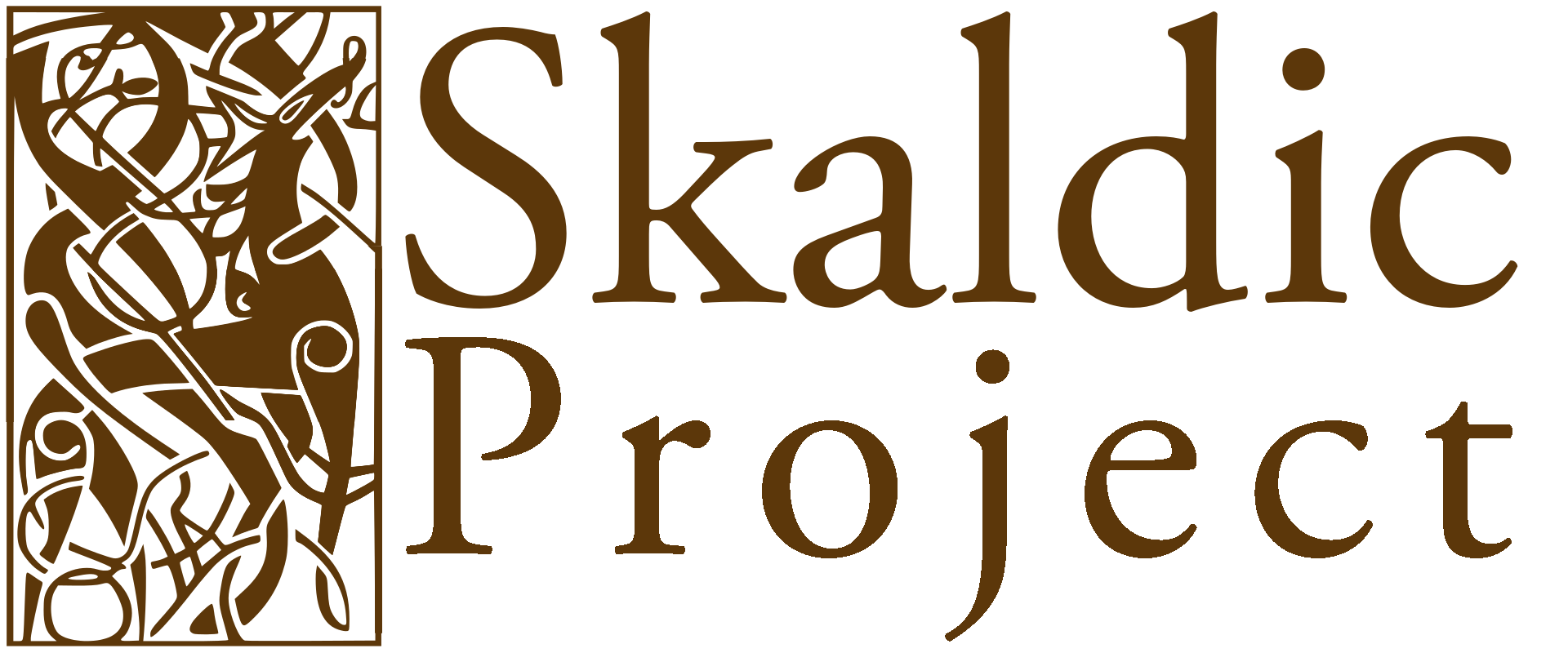Gísl Magnkv 9II
Kari Ellen Gade (ed.) 2009, ‘Gísl Illugason, Erfikvæði about Magnús berfœttr 9’ in Kari Ellen Gade (ed.), Poetry from the Kings’ Sagas 2: From c. 1035 to c. 1300. Skaldic Poetry of the Scandinavian Middle Ages 2. Turnhout: Brepols, pp. 422-3.
Tók ‘captured’
(not checked:)
2. taka (verb): take
notes
[1] á Skíði ‘in Skye’: Skye is an island in the Hebrides.
Skíði ‘Skye’
(not checked:)
Skíð (noun f.): Skye
notes
[1] á Skíði ‘in Skye’: Skye is an island in the Hebrides.
en ‘and’
(not checked:)
2. en (conj.): but, and
Skotar ‘the Scots’
(not checked:)
Skotr (noun m.): Scot
flýðu ‘fled’
(not checked:)
flýja (verb): to flee, take flight
jǫfra ‘of princes’
(not checked:)
jǫfurr (noun m.): ruler, prince
kennings
Œgir jǫfra‘The terrifier of princes ’
= RULER = Magnús
The terrifier of princes → RULER = Magnús
kennings
Œgir jǫfra‘The terrifier of princes ’
= RULER = Magnús
The terrifier of princes → RULER = Magnús
Ívistar ‘of North Uist’
(not checked:)
Ívist (noun f.): North Uist
kennings
gram Ívistar‘the lord of North Uist ’
= Lǫgmaðr
the lord of North Uist → Lǫgmaðr
kennings
gram Ívistar‘the lord of North Uist ’
= Lǫgmaðr
the lord of North Uist → Lǫgmaðr
fylkir ‘The leader’
(not checked:)
fylkir (noun m.): leader
sás ‘whom’
(not checked:)
2. er (conj.): who, which, when
Lǫgmann ‘Lǫgmaðr’
(not checked:)
lǫgmaðr (noun m.): lawyer
sínu ‘his’
(not checked:)
3. sinn (pron.; °f. sín, n. sitt): (refl. poss. pron.)
Interactive view: tap on words in the text for notes and glosses
On his first expedition to the west in 1098, Magnús captured Lǫgmaðr Guðrøðarson, who was the king of the Hebrides, the Isle of Man, and parts of Ireland.
In Mork and F the eight ll. are given as two separate helmingar with intervening prose. For Lǫgmaðr, see Note to Bkrepp Magndr 10/2. — [3, 4]: The Mork variants œgi (m. acc. sg.) jǫfra ‘the terrifier of princes’ (l. 3) and gramr (m. nom. sg.) Ívistar ‘the lord of North Uist’ (l. 4) make no sense in the present context because Lǫgmaðr, not Magnús, was king of North Uist, and he was captured by Magnús. North Uist is an island in the Hebrides.
Stanza/chapter/text segment
Use the buttons at the top of the page to navigate between stanzas in a poem.
Information tab
- text: if the stanza has been published, the edited text of the stanza and translation are here; if it hasn't been published an old edition (usually Skj) is given for reference
- sources: a list of the manuscripts or inscriptions containing this stanza, with page and line references and links (eye button) to images where available, and transcription where available
- readings: a list of variant manuscript readings of words in the main text
- editions and texts: a list of editions of the stanza with links to the bibliography; and a list of prose works in which the stanza occurs, allowing you to navigate within the prose context
- notes and context: notes not linked to individual words are given here, along with the account of the prose context for the stanza, where relevant
Interactive tab
The text and translation are given here, with buttons to toggle whether the text is shown in the verse order or prose word order. Clicking on indiviudal words gives dictionary links, variant readings, kennings and notes, where relevant.
Full text tab
This is the text of the edition in a similar format to how the edition appears in the printed volumes.
Chapter/text segment
This view is also used for chapters and other text segments. Not all the headings shown are relevant to such sections.
